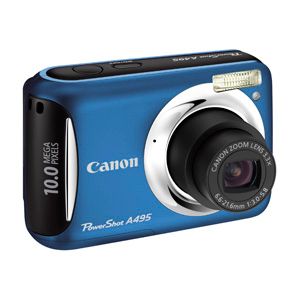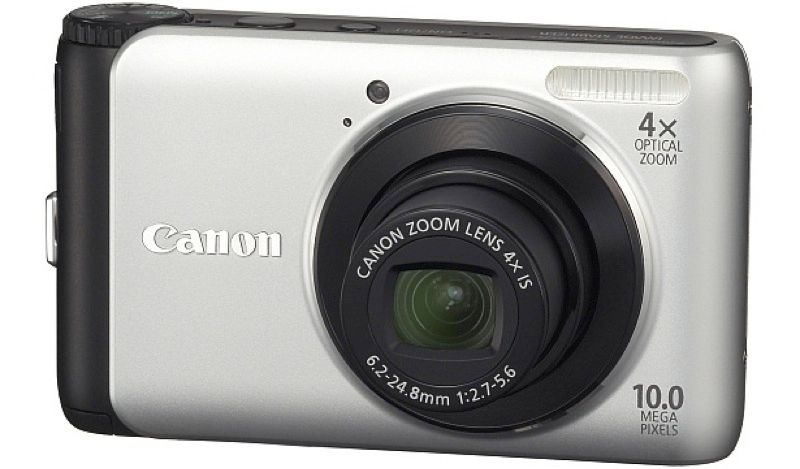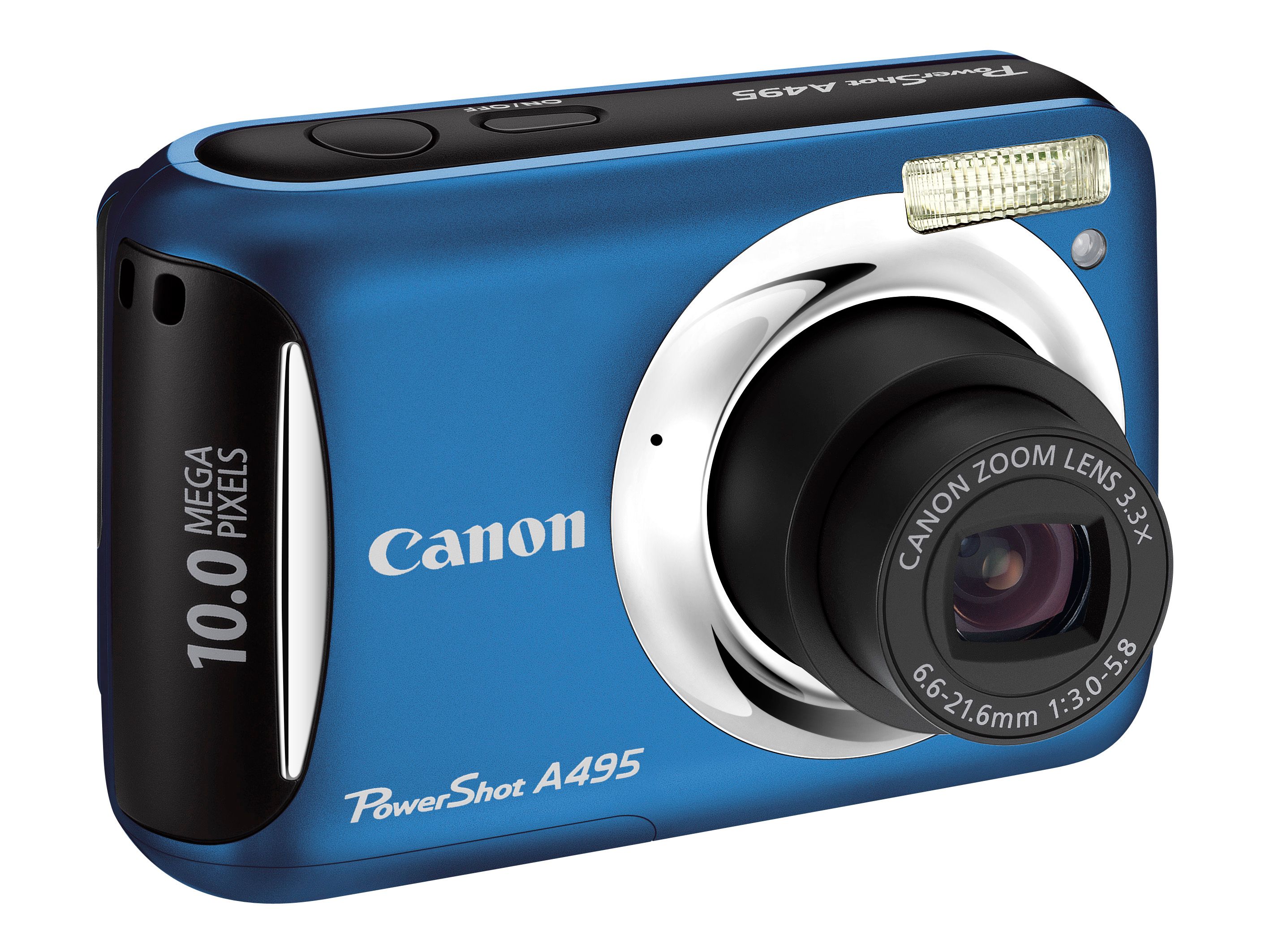Compacts at the lower end of the PowerShot range's pricing scale have always been the poor relations of those from the flashier IXUS brand. That said the gap seems to be narrowing. At a manufacturer's suggested price of £139.99 just £50 separates this 10-megapixel, 3.3x optical zoom model and the simultaneously announced 12-megapixel, 4x zoom IXUS 105. That said the A495 doesn't feature built-in image stabilisation like its pricier sibling.
Our quick take
So, for the modest cost of the A495 you get a rather modest camera. This is in essence an "auto everything" model requiring precious little hands-on control from the user. The low price has meant a limited feature set, power coming courtesy of those two regular AAs, and a build that's plastic to the touch.
Yet at least with said batteries inserted the compact feels fairly solid gripped in the palm, and as we've noted image quality is comparable with the more expensive and outwardly more sophisticated IXUS models with which it shares a sensor of the same physical dimensions. Incidentally there is also an A490 model doing the rounds, a pared down version of the A495 exclusive to the Argos retail chain in the UK. This was being offered for half price at the time of writing.

Canon PowerShot A495 camera - 3.5 / 5
| FOR | AGAINST |
|---|---|
|
|
The cheaper outlay also means that here the unassumingly boxy bodywork - available in a choice of silver, red or blue - is more obviously fashioned from plastic. Plus power doesn't come courtesy of a rechargeable lithium ion pack offering nearly 300 shots from a full charge, but rather two bog standard AAs, good for around 150 images max. To get you started one set of AAs is included in the box with the A495, which, when inserted, account in part for slightly wider dimensions than competing pocket models, at 93.5 x 61.7 x 30.6mm and a weight of 175g including two AA batteries and media card.
However, in practical terms image quality from the PowerShot is on a par with its more expensive IXUS siblings, the focal range here the equivalent of 37-122mm on a 35mm film camera.
Whilst that might not be as ideal for wide-angle shots, as an increasingly common-issue 28mm found on rivals, the camera proves adequate as a general-purpose tool, pictures composed and played back via a 2.5-inch, 115k-dot resolution LCD monitor that adorns the back plate in the expected absence of an optical viewfinder.
Again the lower resolution screen is an obvious trade off for the "economy" outlay. Given the A495's modest level of specification, the ability to shoot to higher capacity removable SDXC cards (up to 2 terabytes) alongside regular SD and SDHC seems somewhat nonsensical.
The camera is not totally without frills though, in that apart from attractive chrome "flourishes" to the exterior a couple of in-camera digital effects are provided in Poster Effect and Super Vivid mode. These are accessed via a press of the shared purpose still and video capture button near the base of the camera back. The same on-screen toolbar provides the ability to swap between Smart Auto mode, cross-referencing any given scene with 18 presets and choosing the most appropriate match to reliably deliver optimal results, plus Program auto, Scenes modes (including a new 3-megapixel low light mode along with face self timer function) and video itself, here at a maximum resolution of 640 x 480 pixels at 30 frames per second.
With a press of the lozenge shaped on/off button on the top plate, the camera powers up in just over a second, lens protruding from its inactive position flush to the body to maximum wide angle setting, whilst the rear screen bursts into life. In operation the zoom takes a mere couple of seconds to travel through this range, sound-tracked by a low mechanical buzz.
Despite its inauspicious nature and the inclusion of a long-in-the-tooth DIGIC III (as opposed to the current DIGIC IV) processor, the A495 is responsive to each button press and selection, with the occasional pause for a moment or two for the flash to charge from cold before it can be utilised. As flash is located just above the lens Canon has included automatic red eye correction.
Apart from the brief wait for the flash to power up sufficiently to fire, another snag we found is that the camera's shutter release button can prove over sensitive. On more than one occasion this resulted in a shot being taken whilst we were merely attempting a half press to lock focus and exposure before going on to re-compose the image. Go very gently and the camera takes a brief moment to determine focus and exposure once the button is half pressed, AF points/s illuminating in green. With the usual minimal shutter lag the camera takes around 3 seconds to write the resultant JPEG image file to memory once the shot is taken.
When conditions are ideal and blue skies abound the A495 delivers image results that belie its budget pricing, with reds, greens and blues being reproduced with sufficient visual "pop". These proved as good as, if not slightly better than, results from an IXUS 105 camera we were testing alongside it. If we're picking holes, images are a little soft on close inspection and capping the PowerShot A495's light sensitivity at ISO 1600 is hardly pushing boundaries. But then agenda setting innovation is not what you expect from a camera with a street price of around £100.
To recap
For those looking for an inexpensive first digital camera or a simple to use product with sufficiently large enough buttons for newcomers both old and young, then the A495 is worthy of further consideration. It's also cheaper than the nearest IXUS models and, if you can live with the AAs and slightly bulkier plastic-y feel, delivers very similar results



